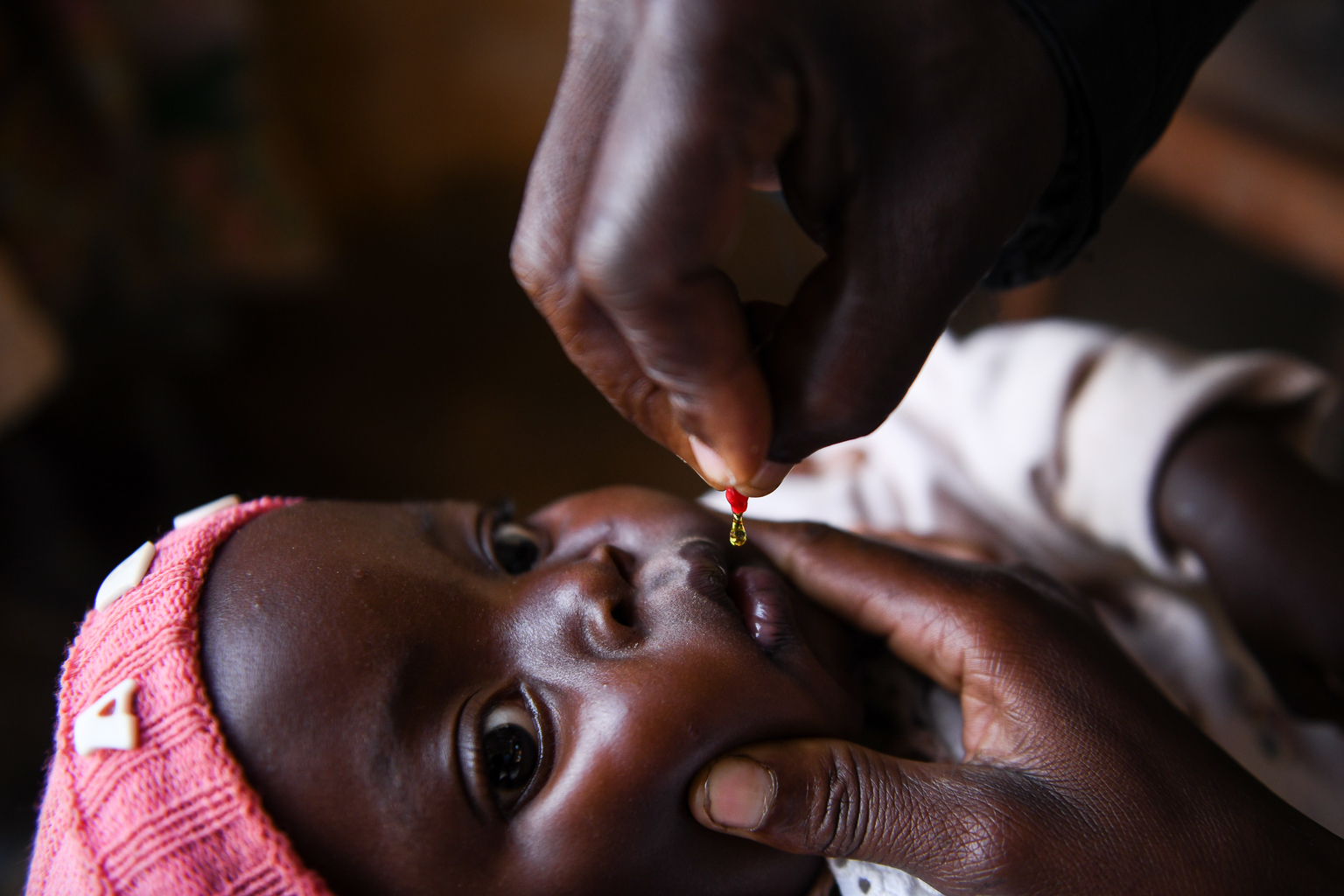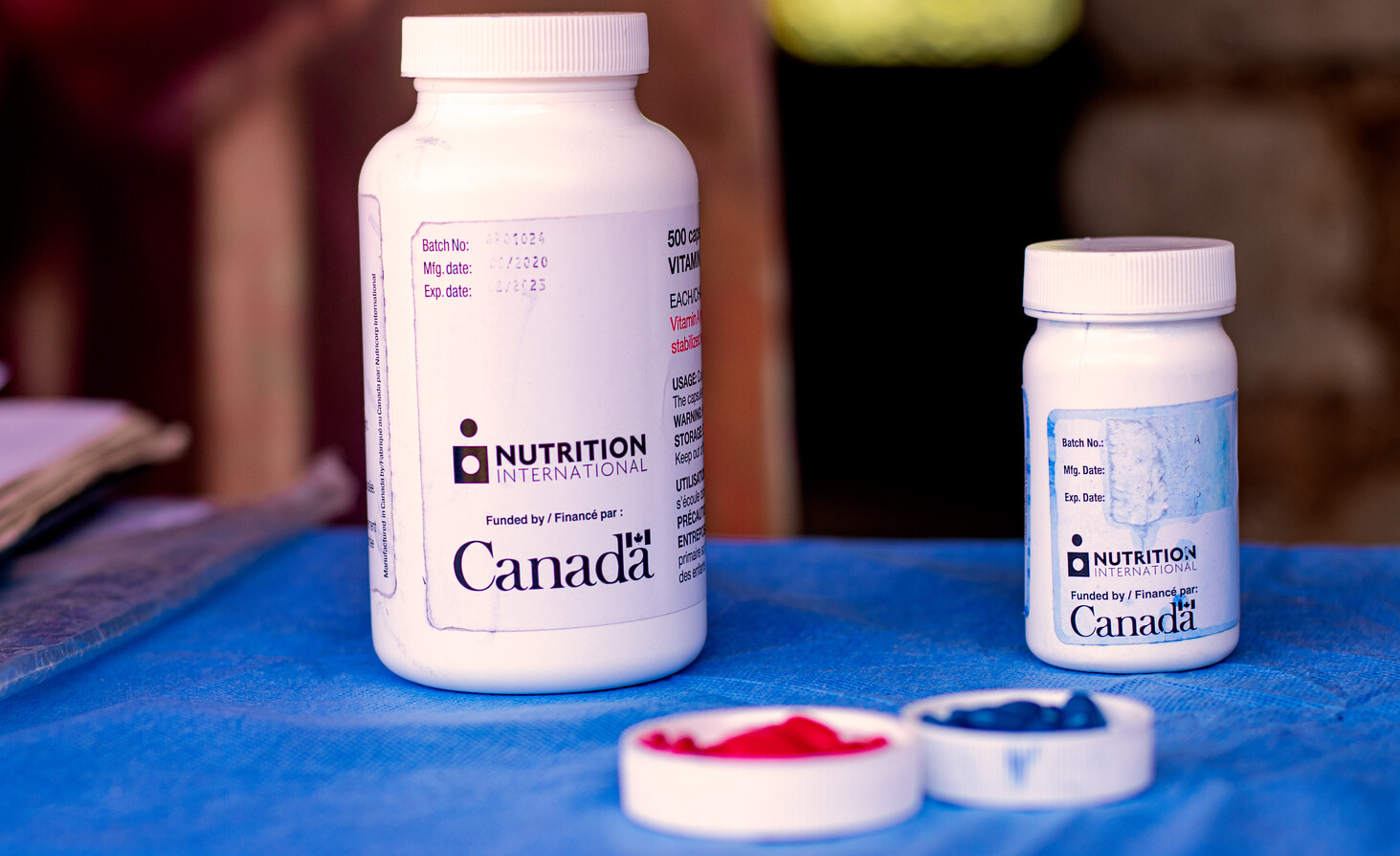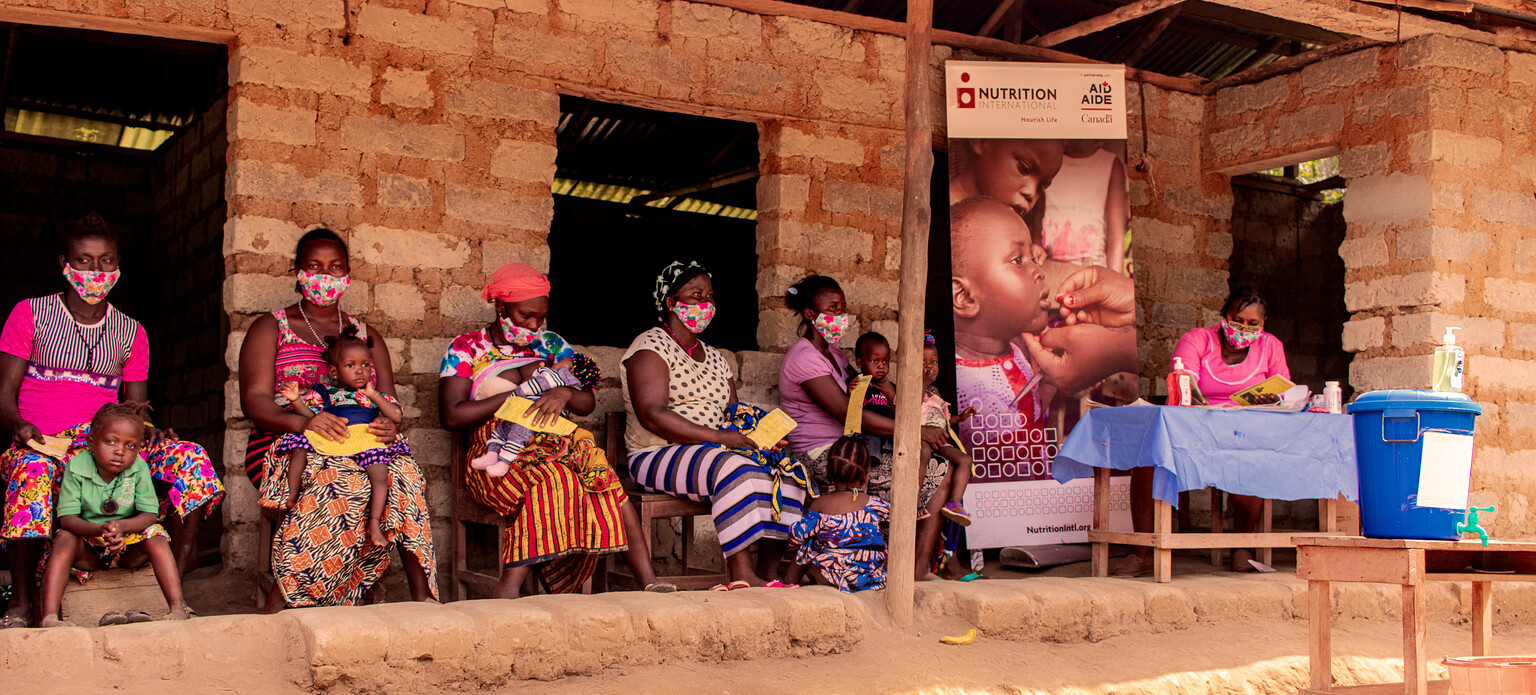Field Stories
Ten must see global nutrition stories from 2023
December 18, 2023
Making the digital shift: How technology improves vitamin A programming
Follow along to learn how Nutrition International’s vitamin A supplementation program utilizes digital platforms to improve delivery and adapt to COVID-19 contexts.
Posted on April 11, 2022
In December 2021, teams of health workers across Sierra Leone carried out a vitamin A supplementation (VAS) campaign, all intent on reaching every eligible child with their life-saving dose. The significant time and effort needed to plan and execute this campaign meant that there was no room for missed opportunities. One of the local teams of frontline workers, trained to start each morning checking to make sure they had everything they needed for a successful day, did a count of the red and blue capsules they had in stock. With some quick calculations, they realized they may need replenishments, and knew they needed to act quickly.
“They immediately flagged this issue to the national-level team through WhatsApp,” recounts Banda Ndiaye, Nutrition International’s Deputy Regional Director of Health in Africa. “The national-level team then used the same platform to identify a supervisory VAS team closer to the campaign site experiencing the stock shortage. This facilitated communication between teams, leading to the local team securing the appropriate number of capsules needed from other teams before the day was over.”
VAS is a low cost, high impact intervention that protects children under five from preventable diseases and death. Thanks to the quick work of the teams on the ground, parents and caregivers who brought their children to receive a VAS dose left one step closer to improving their children’s health.
This is just one of many examples where digital technology platforms have been pivotal for responding to challenges and identifying opportunities within Nutrition International’s VAS program.
“We are ensuring that the organization has systems in place that are fit for our current needs, but also the needs of the organization that we’re growing into.
— Colin Beckworth, Technical Advisor for Nutrition Surveillance
In recent decades, the drastic advancement of digital technology has introduced an entirely new reality for global development organizations looking to extend the reach of their work. Nutrition International’s VAS program, for example, has used such technologies to overcome barriers related to communication and information-sharing, to providing online trainings and job aids, ensuring data quality, and overcoming logistical challenges.
Since the onset of the COVID-19 pandemic, global movement restrictions and longstanding lockdowns have intensified the need for organizations to adopt technologies that enable remote work environments that meet on-the-ground realities. Nutrition International’s VAS program has coevolved with the digital world to provide lifesaving doses of vitamin A to millions of children annually. Below, we look at three ways this is improving VAS delivery, from pre-campaign to the dose distribution itself, to surveys conducted after coverage.
Training health workers on up-to-date policies and protocols before doses are given out sets up distribution for success. As host and chair of the Global Alliance for Vitamin A (GAVA), Nutrition International supported the digitization of COVID-19 protocol guidance for VAS health workers. GAVA developed three pictorial video job aids as a complimentary tool to help guide health workers through the steps required to safely administer VAS in the context of COVID-19. These videos were developed to be applied globally and were distributed in compressed file sizes so they could be easily shared via mobile apps to reach health workers involved in VAS distribution.

“The videos go through the steps in detail and were made in four languages to increase their reach,” explains Caitlin Gomez, Nutrition International’s Technical Advisor in Child Survival for VAS. “Given the limitations of in-person training and supportive supervision as a result of the pandemic’s restrictions, these videos serve as an assistive tool for health workers to solidify their knowledge on safe administration protocols for VAS protocols.”
In response to the safety concerns related to in-person trainings since the start of the pandemic, Nutrition International supported the design and development of an e-learning app for VAS health workers in Bangladesh. Available in both web and mobile format, this app enables users to enroll and navigate through courses, fill in knowledge gaps, participate in learning forums and communicate with peers using in-app messaging. Instead of only relying on in-person trainings and workshop settings, VAS health workers can use the app to receive trainings and certificates associated with COVID-19 safety protocols and VAS distribution guidelines remotely.
When asked if he sees the value of this e-learning app post-pandemic, Nutrition International’s Regional Manager of Research and Evaluation for Asia, Dr. Manoj Kumar Raut, agrees that opportunity is knocking: “It’s something people can join and learn from wherever they are. We also found that more than nine out of ten users of the app rated it to be quite good to very good and excellent. This is definitely something that is becoming an innovation, which surpasses the difficulties and challenges faced due to the pandemic’s social distancing and travel restrictions. It has potential for replication in similar settings elsewhere.”
WhatsApp is a popular online messaging service that acts as an alternative to traditional SMS texting. As long as there is a stable internet connection or data service, WhatsApp users can electronically send texts, photos, videos, documents, and locations, as well as make voice calls globally.

“WhatsApp has mainly been useful for information-sharing between national- and local-level teams in Africa. They have been using this information to flag or highlight challenges throughout the distribution of VAS,” Ndiaye shares.
The VAS program has leveraged WhatsApp as a platform to facilitate smoother coordination and more efficient decision-making. New information between teams flows in a two-way communication stream. This enables VAS program officers to respond to urgent mobilization and distribution challenges for communities more efficiently.
Deborah Benneth, Nutrition International’s Senior Program Officer in Nigeria, elaborates on the convenience of a platform like WhatsApp to prompt faster corrective action at a time when this can’t be done in-person. She says this was especially helpful for campaigns that happened at the peak of pandemic to ensure that people comply with COVID-19 protocols for delivering VAS safely.
If health workers or attendees were documented improperly wearing their personal protective equipment (PPE), it was easy to make a simple call and prompt local teams to comply with COVID-19 safety measures. “In that way, WhatsApp has been very useful to reach your audience without travelling. It’s that on-the-spot corrective action that you can get while in front of your computer or just on your phone,” Benneth highlights.
Occasionally, governments and their partners may choose to conduct post-event coverage surveys (PECS) a few weeks after a VAS campaign to gain additional insights into how it went. That data is used to inform ways to improve service delivery. These surveys, conducted at the household level, are designed to be both rapid and rigorous – a challenging balance. The quality of the data collection and analysis is crucial for informing program improvements to achieve even higher coverage the next time around. Survey teams are encouraged to use mobile data collection tools, such as Open Data Kit (ODK), to streamline this process and reduce some of the error and lag-time associated with paper-based surveys.

Outside of VAS, Nutrition International developed its own suite of tools called the Nutrition Information Management System (NIMS) for data collection and monitoring. Colin Beckworth, Nutrition International’s Technical Advisor for Nutrition Surveillance, highlights the importance of the online data monitoring feature within the toolkit because it runs tests on the data while it’s being collected. Survey teams use mobile apps (such as Survey CTO, Ona, or KoboToolbox) to collect their survey responses, which are then transmitted to a secure server. “You can run tests on the data to look for problems arising as you’re collecting it, so you can correct it in real-time,” Beckworth shares.
New opportunities for improving global health programs will continue to arise as the digital space is ever evolving. Nutrition International is working to ensure that VAS programs successfully navigate this digital shift. “Nutrition International isn’t only setting up systems that are fit for purpose today. We’re making sure they will be fit for purpose for the next five to ten years,” Beckworth notes. “We’ll only get there by moving into the digital space, as we are currently doing. We are ensuring that the organization has systems in place that are fit for our current needs, but also the needs of the organization that we’re growing into.”
As a leader in the fight against malnutrition, Nutrition International remains committed to reducing the impact of vitamin A deficiency in children under five. The use of innovative digital technologies is one important aspect to continue promoting improved VAS programming and service delivery.